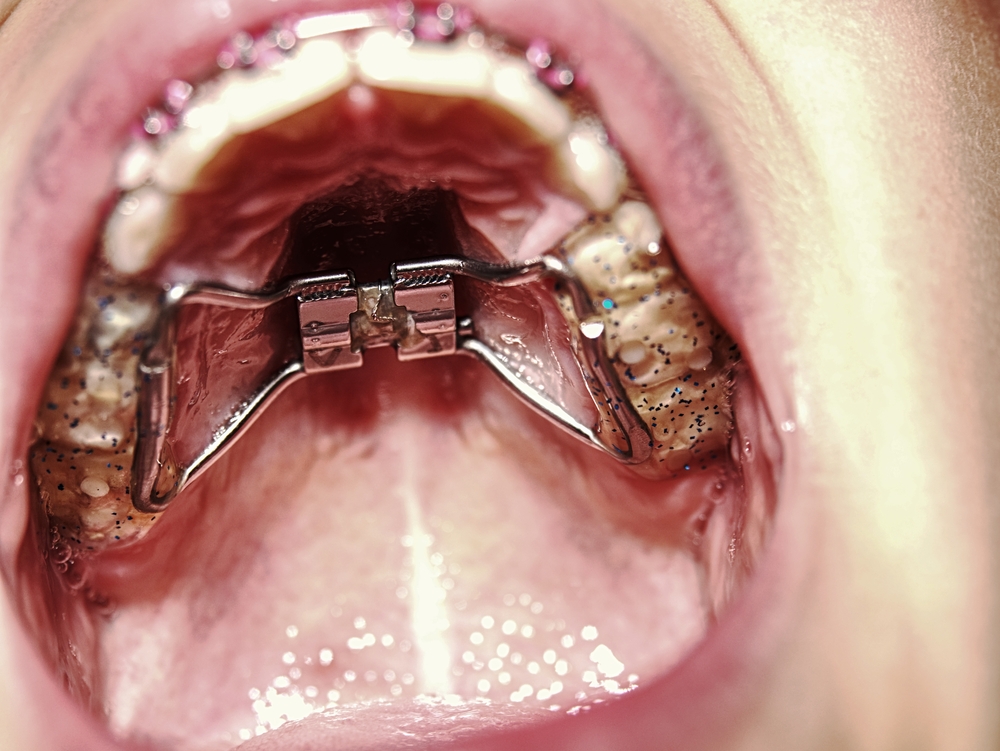
Palatal expanders are designed to take full advantage of a child’s natural growth process by treating or preventing malocclusions or poor alignment. Palate expanders help an orthodontist to create more space in a child’s mouth by gradually widening the upper jaw. While the device may look or sound frightening at first; however, it works slowly with little discomfort.
Read on to learn the five most common questions we hear from parents regarding palate expanders for kids.
What Is a Palate Expander?
A palate expander is a custom-made orthodontic appliance that fits over several top teeth towards the back of the mouth. The device has two halves that are connected in the middle with a screw system. The appliance works by activating the turn screw with a special key each day. The palatal bones begin to expand and gradually move apart. Once the desired expansion has been achieved, the appliance will remain in place for 3-6 months to allow for the new bone to form in the gap and stabilize the development.
Why Is a Palate Expander Necessary?
There are three situations in which expanding a child’s palate may be necessary:
Crossbite
If a child’s upper jaw is too narrow to fit correctly with the lower jaw, the back top teeth will bite inside of the lower teeth rather than the outside. The upper teeth should close around the outside of the lower teeth, and a patient with a narrow palate can suffer from crossbite. This can result in asymmetrical growth of the lower jaw, which can lead to facial asymmetry if not corrected in time.
Crowding
Even before a child’s permanent teeth come in completely, an orthodontist can determine if there will be enough space to accommodate them. By widening the upper jaw, space can be created without the need for extracting any permanent teeth.
Impacted Teeth
A tooth that has yet to erupt, but is blocked by other teeth can become impacted. This is most commonly seen in canine or eye teeth. Widening the upper jaw can allow for a tooth to have the necessary room to drop down into the proper position on its own.
Breathing Issues
A narrow or deep upper jaw can make it difficult for a child to breathe through the nose. Continuous mouth-breathing causes the unhealthy inhalation of unfiltered bacteria, dry mouth, and other linked health issues.
How Do You Turn an Expander?
Once the palate expander has been placed in a child’s mouth, it will be up to the parent or guardian to turn the expander at regular intervals as instructed by the orthodontist. The turning of the device is what widens the upper jaw. Your child’s orthodontist will provide you with a specially-designed key that inserts into an opening in the device in addition to a set of instructions.
What Are The Common Side Effects?
Palate expanders can lead to discomfort and pain as the upper jaw stretches and widens. Other side effects include:
- Aches in the jaw
- Sinus pressure
- Headaches
- Difficulty speaking
- An increase in saliva production
- A gap in front teeth
- Food debris getting stuck between the device and the roof of the mouth
How To Maintain Oral Hygiene During Treatment
While wearing an expander, the patient should avoid sticky and hard foods, including popcorn, ice, chips, corn on the cobb, and most candies. While wearing an orthodontic appliance, there is always an increase in the bacterial buildup that having good oral hygiene practices is essential. Always brush around and underneath an expander. This can be challenging, so investing in a water flosser may help to dislodge food debris and wash away bacteria.
To learn more about palate expanders, and if your child could benefit, contact Thomas Orthodontics with any further questions or to schedule a consultation.





